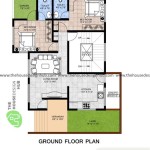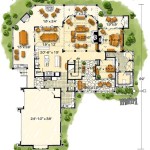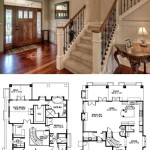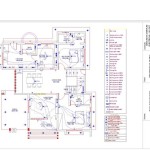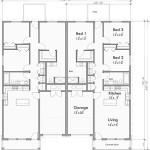An Exploration of the Essential Aspects of Ancient Greek House Floor Plans
The architectural designs of ancient Greece have captivated the world for centuries, leaving an enduring legacy on modern architecture. Among the most fascinating aspects of Greek dwellings is the intricate planning of their floor plans, which reflect the cultural norms, societal structure, and daily life of the ancient Greeks.
Central Courtyard (Aule)
The heart of an ancient Greek house was the central courtyard, known as the aule. This open-air space served as a multifaceted living area, where daily activities such as dining, socializing, and religious ceremonies took place. The aule was typically surrounded by a colonnade or peristyle, providing shade and privacy.
Megaron
The primary living space in a Greek house was the megaron, a rectangular hall located on the north side of the aule. It was the domain of the household head and his family and comprised a large central hearth known as the eschara. The megaron often featured raised platforms (bathron) used for seating and sleeping.
Gynaeceum (Women's Quarters)
Separated from the male-dominated megaron was the gynaeceum, the private quarters reserved for women. It typically consisted of several rooms used for domestic tasks, sleeping, and the care of children. The gynaeceum was often located on the upper floor or at the back of the house to ensure privacy.
Andron
For male socializing and entertainment, Greek houses featured an andron, a dining and reception room located on the ground floor. It was decorated with elaborate frescoes and mosaics and often had a separate entrance to allow for male guests' unhindered access.
Other Rooms
In addition to the main living areas, Greek houses typically had additional rooms serving specific functions. These included storage rooms (apothēkai), kitchens (oikias), and bathrooms (loutron). The size and arrangement of these rooms varied depending on the wealth and status of the homeowner.
Materials and Construction
Ancient Greek houses were typically constructed of stone, wood, and mudbrick. The foundations were typically made of large stones, while the walls were built using smaller stones or mudbrick. The roofs were made of a combination of wood and clay tiles. Greek craftsmen paid great attention to detail, using sophisticated techniques such as columnar construction and marble cladding.
Influence on Modern Architecture
The floor plans of ancient Greek houses have had a profound influence on modern architecture. Their emphasis on symmetry, privacy, and communal spaces can be seen in many modern homes and public buildings. The use of central courtyards, peristyles, and separate living quarters continues to inspire architects to create functional and aesthetically pleasing living environments.

Ancient Greek House Courtyard Original Houses Plans Architecture

Reconstruction Of An Ancient Greek House Ground Floor Plan Riba Pix

Ancient Greece The Greek House

5th Century Bc Classical Age Greek House Plan With Separate Quarters For Male And Female Ancient Architecture

Architectural History Ancient Greece Part 4 Domestic Buildings Greek Furnishings Design Fashion Blog

Plan D Une Maison Grecque Apres Vitruve Geographicus Rare Antique Maps

File Greek House Layout Svg Wikipedia

File Greek House Layout Svg Wikimedia Commons

Architectural History Ancient Greece Part 4 Domestic Buildings Greek Furnishings Design Fashion Blog

Greek Roman Mythology Tools


